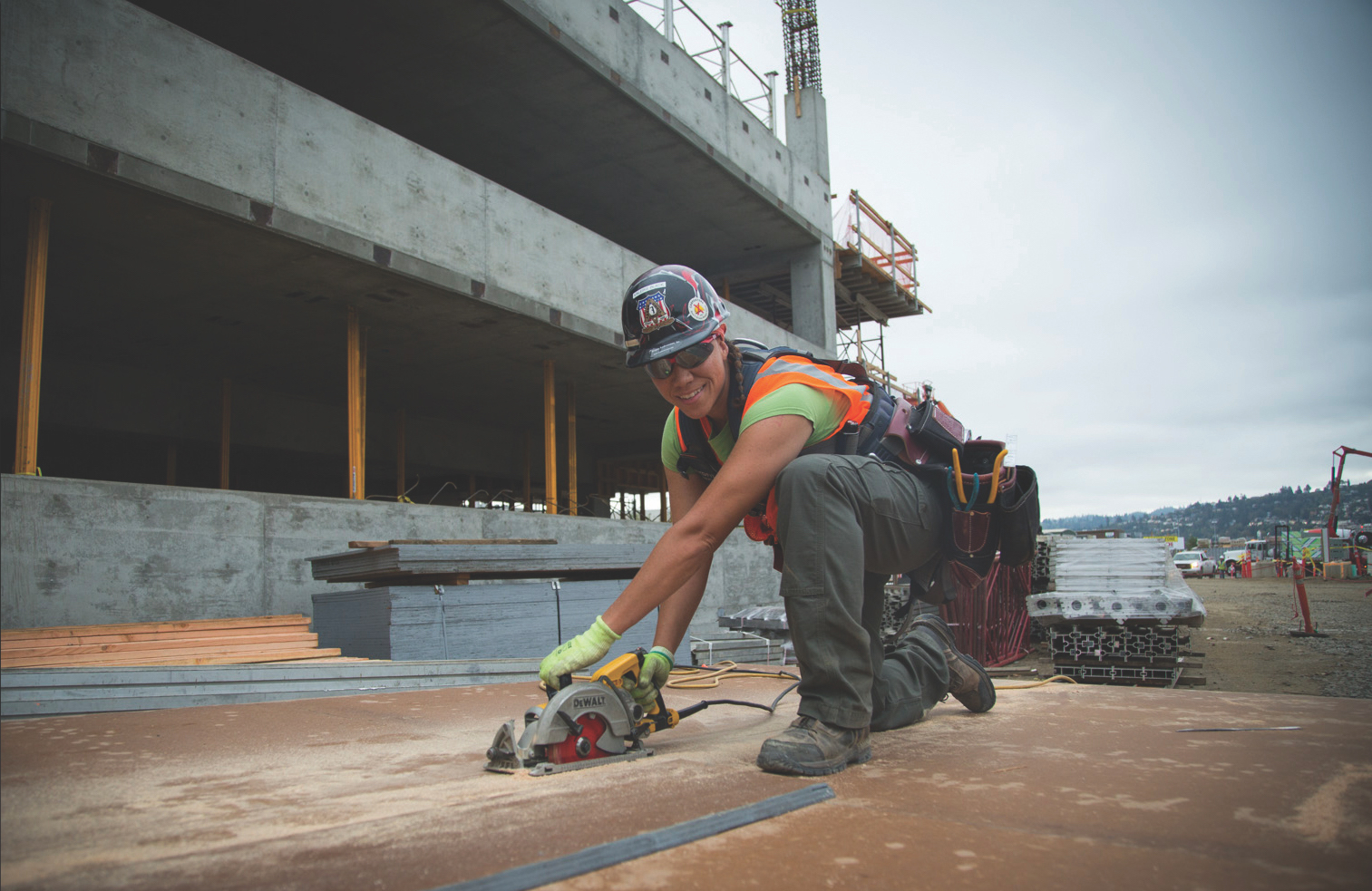In 2021, the number of women working in trades occupations reached the highest level ever, at just over 314,000. During the last five years, the number of tradeswomen increased by almost one-third (32.1 percent). More women work as tradeswomen than as dental hygienists or veterinarians. Yet tradeswomen are only 3.9 percent of those who work with the tools in construction. However, these trends show that construction careers are attracting an increasing number of women.
Construction trades careers do not require a college degree, are accessible through earn-as-you-learn apprenticeships, and, especially in union jobs, provide good pay with benefits. Access to family-sustaining blue-collar careers is critical for women’s economic security. While tradeswomen have made much progress in recent years, too many, particularly women of color, face discrimination in hiring and employment and experience sexual harassment and gender or racial bias on the job. Women are less likely to be retained on core crews, promoted to field leadership positions, or to receive the same on-the-job technical training as men. Such adverse conditions mean that women are less likely to complete their apprenticeships than men, and are more likely to leave the industry.
Women are also under-represented in other aspects of construction: In 2021, women made up only 8.6 percent of construction managers. For the whole construction sector, including office and administrative staff, women comprise only 11.0 percent. With the current worker shortage, women are an untapped source of potential workers.
Table 1. Women Working in Construction and Extraction Occupations, 2016 to 2021
| Occupation | 2016 | 2021 |
Percent Change, |
||
| Number Women | Percent Women | Number Women | Percent Women | ||
| Construction Tradeswomen Including |
237,870 | 3.0% | 314,223 | 3.9% | 32.1% |
|
Laborers |
63,035 | 3.5% | 97,425 | 4.5% | 54.6% |
|
Painters and paperhangers* |
38,192 | 6.6% | 49,484 | 8.9% | 29.6% |
|
Carpenters |
28,539 | 2.1% | 38,130 | 3.1% | 33.6% |
|
Pipelayers, plumbers, pipefitters, and steamfitters* |
8,162 | 1.4% | 12,327 | 2.1% | 51.0% |
|
Construction and building inspectors |
5,952 | 6.4% | 10,300 | 10.0% | 73.1% |
| First-line supervisors | 17,680 | 2.6% | 24,700 | 3.8% | 39.7% |
| Construction managers | 60,088 | 7.4% | 85,914 | 8.6% | 43.0% |
| All Construction Industry Workers (including office/admin) |
939,000 | 9.1% | 1,241,000 | 11.0% | 32.2% |
Note: *In 2020, the U.S. Bureau of Labor Statistics amended the definitions of some occupations; this means that data for 2016 and for 2021 are not fully comparable. Data collection problems during COVID-19 also lead to greater potential estimation difficulties for 2021.
Source: Institute for Women’s Policy Research calculations based on U.S. Bureau of Labor Statistics, Current Population Survey Annual Averages, “Table 11. Employed persons by detailed occupation, sex, race, and Hispanic or Latino ethnicity,” and “Table 14. Employed persons in nonagricultural industries by age, sex, race, and Hispanic or Latino ethnicity,” https://www.bls.gov/cps/tables.htm.
Numbers matter. Having clear data can create accountability and help policymakers ensure that tradeswomen have access to sustainable careers, with adequate work hours, workplace policies that support work/family balance, comprehensive on-the-job training and freedom from bias and sexual and racial harassment. The industry as a whole benefits greatly from access to the skilled work of tradeswomen.
The National Taskforce on Tradeswomen’s Issues is a coalition of tradeswomen organizations, advocates, allies, and individual tradeswomen. The Taskforce promotes public policies and best practices towards equity in apprenticeship, training, workforce development, career and technical education, and in workplace experience in construction and other trades occupations for women.
The National Taskforce on Tradeswomen’s Issues is grateful for the data analysis of Ariane Hegewisch and Eve Mefferd of the Institute for Women’s Policy Research that made this publication possible.


